The advantages of topping up your ISA early
The new tax year may only be a couple of weeks old but there are benefits to making use of your ISA allowance early.
Everyone gets an annual ISA allowance each tax year. This lets you save up to a set amount tax-free, £20,000 in the 2018/2019 tax year, in a cash or stocks and shares ISA.
Remember, HM Revenue and Customs practice and the law relating to taxation are complex and subject to individual circumstances and changes which cannot be foreseen.
Although there is no fixed term, you should consider stocks and shares ISAs to be a medium to long term investment of ideally five years or more.
Often there is a rush at the end of the tax year to top up ISAs, but there are advantages to being an early bird investor and putting your money into an ISA from the start rather than the end of the tax year.
Analysis by investment fund provider Architas looked at the difference in returns of the annual ISA allowance invested into the FTSE All Share, excluding charges, from 2007 to 2017, at the start of the tax year compared to the end of the tax year.
It found investing a lump sum at the start of the year returned £6,627 more than leaving it to the last minute.
Early bird investing on the first day of the tax year would have returned £165,161 compared to £158,534 for waiting until the end of the tax year.
This is because the longer you are in the market for, the more you can benefit from the peaks and ride the volatility of the troughs.
Many investors would struggle to use the full £20,000 allowance, but even if you only have a bit of money to invest, regular contributions rather than investing a lump sum can be more efficient as you benefit from pound cost averaging, which helps smooth out rises and falls in share prices.
The basic idea is that by investing a fixed sum each month, when prices have fallen, your fixed sum buys more, and when they rise, you benefit from the increase in value. So you cash in on price changes without having to try to time the markets.
For example, if you have £1,200 to invest, putting in a lump sum when the price is £5 a share will get you 240 shares. If you make regular investments of £100 – assuming the shares spend six months at £5, four months at £4, and two months at £6 – your £1,200 will get 253 shares.
Choosing how, when and where to invest can be tricky so get in touch with your financial adviser for expert advice on suitable ways to invest tailored to your situation.

